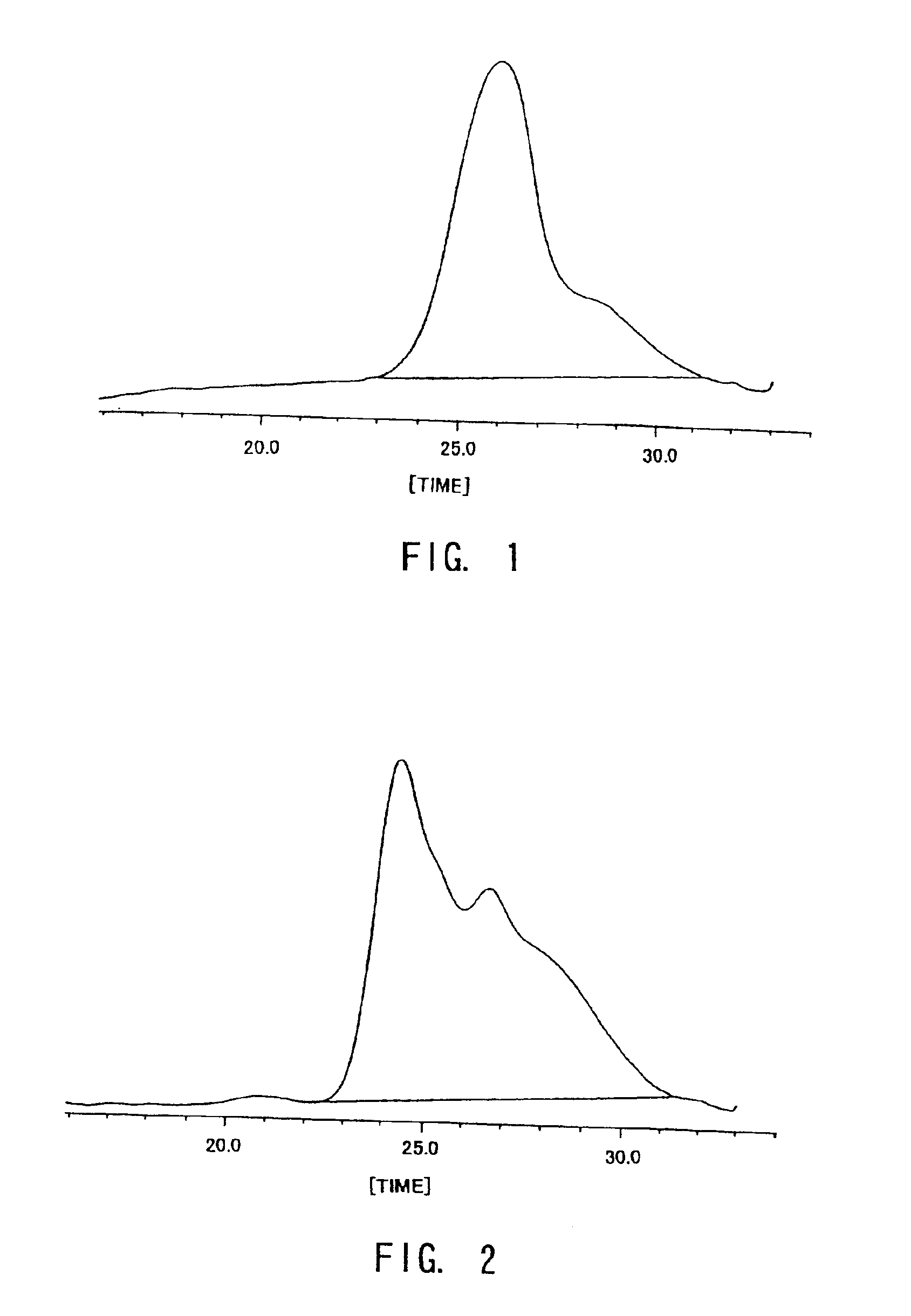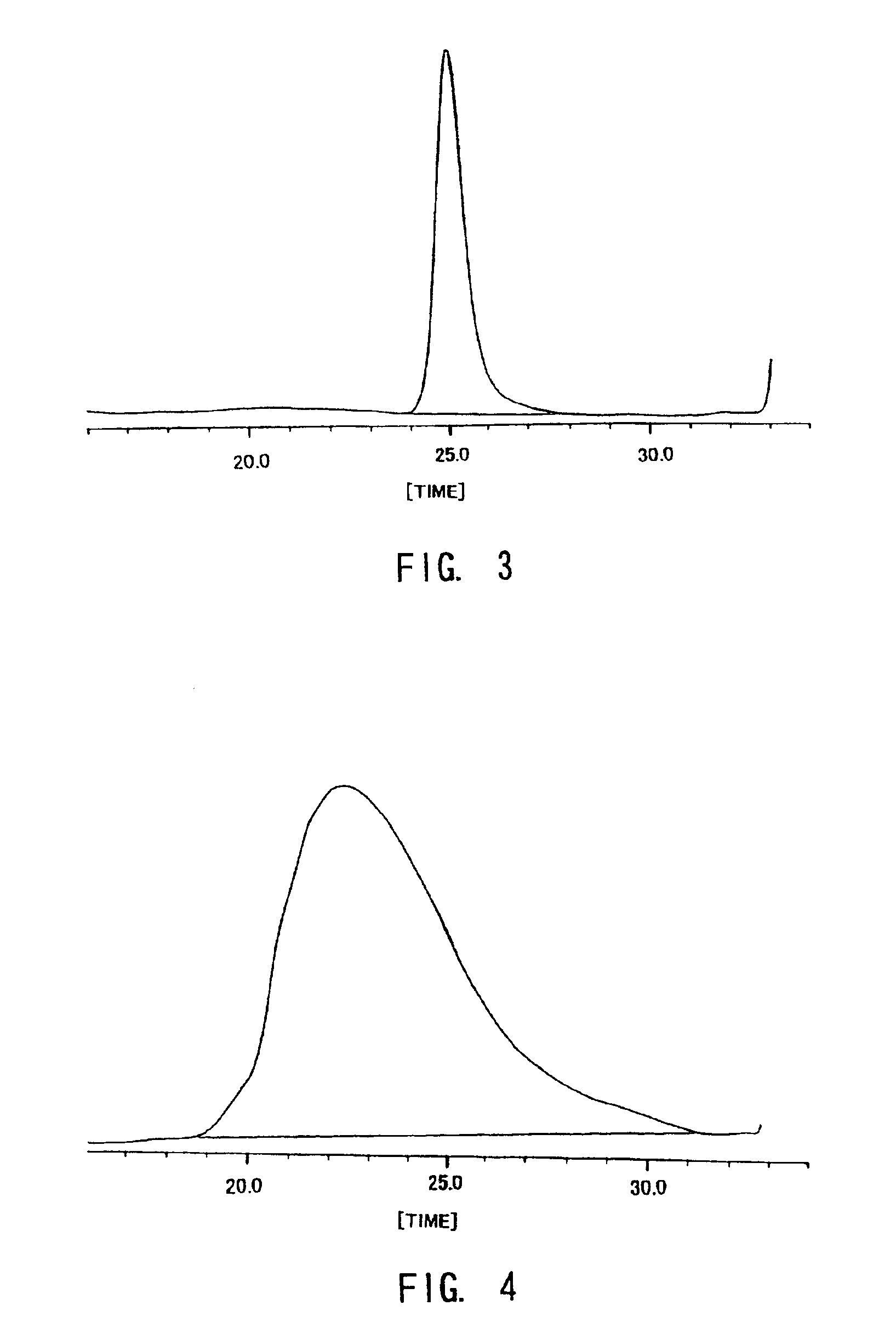Preparation process of acrylic acid ester polymer
a technology polymer, which is applied in the field of preparation process of acrylic acid ester polymers, can solve the problems of difficult industrial use of tetrahydrofuran or collection, difficult industrial application of this process, and inability to obtain a desired molecular weight of good reproducibility, etc., and achieves high polymerization rate, high living properties, and high block forming efficiency
- Summary
- Abstract
- Description
- Claims
- Application Information
AI Technical Summary
Benefits of technology
Problems solved by technology
Method used
Image
Examples
referential example 1
Preparation of an Organoaluminum Compound (I): isobutylbis(2.6-di-t-butyl-4-methylphenoxy)aluminum
In a flask having an internal volume of 200 ml and an internal atmosphere purged with nitrogen, 34 ml of dry toluene obtained by drying over sodium and distilling under a nitrogen atmosphere and 11.02 g of 2,6-di-t-butyl-4-methylphenol were charged, followed by dissolution while stirring at room temperature. To the resulting solution, 6.31 ml of triisobutylaluminum was added. The resulting mixture was stirred at 80° C. for about 18 hours, whereby a toluene solution containing 0.5 mol / l of the intended organoaluminum compound (I) (isobutylbis(2,6-di-t-butyl-4-methylphenoxy)aluminum) was prepared.
referential example 2
Preparation of an Organoaluminum Compound (I): n-octylbis(2.6-di-t-butyl-4-methylphenoxy)aluminum
In a flask having an internal volume of 200 ml and an internal atmosphere purged with argon, 31 ml of dry toluene obtained by drying over sodium and distilling under an argon atmosphere and 11.02 g of 2,6-di-t-butyl-4-methylphenol were charged, followed by dissolution while stirring at room temperature. To the resulting solution, 9.17 g of tri-n-octylaluminum was added. The resulting mixture was stirred at 80° C. for about 18 hours, whereby a toluene solution containing 0.5 mol / l of the intended organoaluminum compound (I) (n-octylbis(2,6-di-t-butyl-4-methylphenoxy)aluminum) was prepared.
referential example 3
Preparation of an Organoaluminum Compound: ethylbis(2.6-di-t-butyl-4-methylphenoxy)aluminum
In a flask having an internal volume of 200 ml and an internal atmosphere purged with argon, 36 ml of dry toluene obtained by drying over sodium and distilling under an argon atmosphere and 11.02 g of 2,6-di-t-butyl-4-methylphenol were charged, followed by dissolution while stirring at room temperature. To the resulting solution, 3.42 ml of triethylaluminum was added. The resulting mixture was stirred at 80° C. for about 18 hours, whereby a toluene solution containing 0.5 mol / l of the intended organoaluminum compound (ethylbis(2,6-di-t-butyl-4-methylphenoxy)aluminum) was prepared.
PUM
| Property | Measurement | Unit |
|---|---|---|
| temperature | aaaaa | aaaaa |
| temperature | aaaaa | aaaaa |
| temperature | aaaaa | aaaaa |
Abstract
Description
Claims
Application Information
 Login to View More
Login to View More - R&D
- Intellectual Property
- Life Sciences
- Materials
- Tech Scout
- Unparalleled Data Quality
- Higher Quality Content
- 60% Fewer Hallucinations
Browse by: Latest US Patents, China's latest patents, Technical Efficacy Thesaurus, Application Domain, Technology Topic, Popular Technical Reports.
© 2025 PatSnap. All rights reserved.Legal|Privacy policy|Modern Slavery Act Transparency Statement|Sitemap|About US| Contact US: help@patsnap.com


